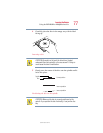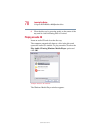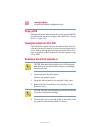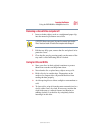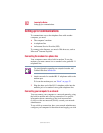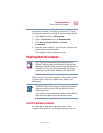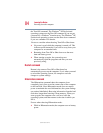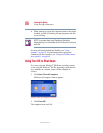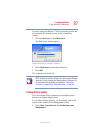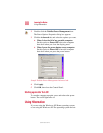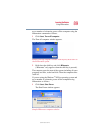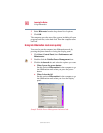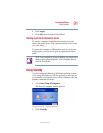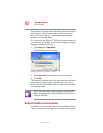
85
Learning the Basics
Powering down the computer
5.375 x 8.375 ver 2.3
❖ Because the state of the system is held on the hard disk,
no data is lost if the battery discharges.
❖ Restarting from Hibernation mode uses less time and
battery power than restarting from Turn Off.
❖ Restarting from Hibernation mode uses a little more time
and battery power than restarting from Standby because
information is being retrieved from the hard disk instead
of memory.
❖ When starting up again, the computer returns to the state
in which you left it, including all open programs and files
you were using.
For more information about the Hibernation command, see
“Using Hibernation” on page 88. For information about
going into Hibernation mode more quickly, see “Going into
Hibernation mode more quickly” on page 90.
Standby command
Standby puts the computer into a power-saving mode.
Standby holds the current state of the computer in memory so
that, when you restart the computer, you can continue
working from where you left off.
Factors when choosing Standby:
❖ While in Standby mode, the computer uses some battery
power. The battery will eventually discharge in Standby
mode. If the battery discharges, your data will be lost if
you do not save your work before entering Standby
mode.
❖ Restarting from Standby mode uses less time and battery
power than restarting from Turn Off or Hibernation
mode.



